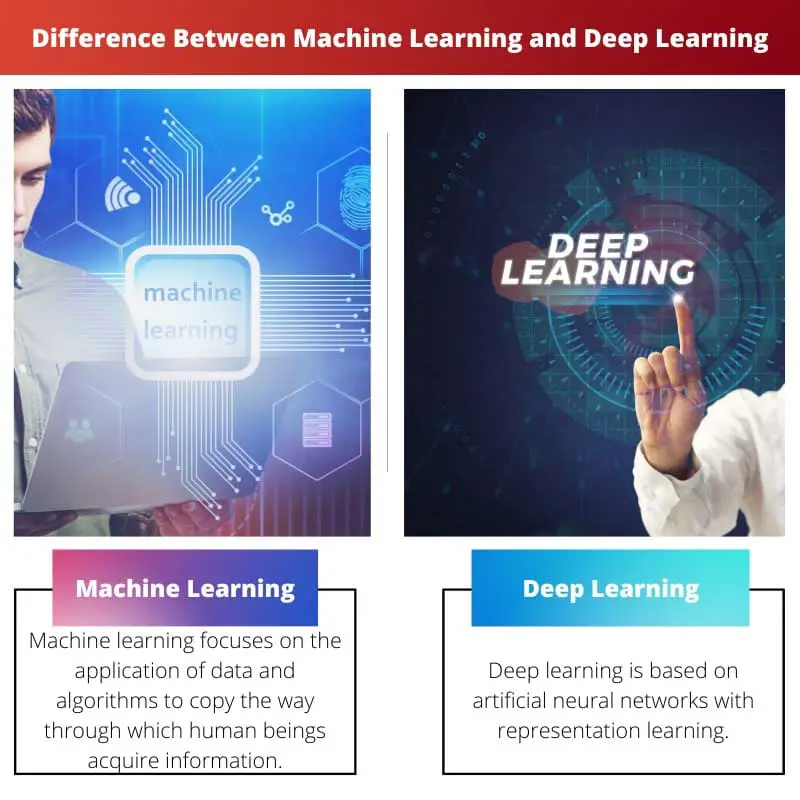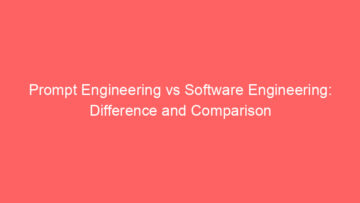Machine learning and deep learning have become an integral part of every career. Over the years, computers have tried to make accurate predictions with as little human intervention as possible.
Machine learning and deep learning are two such attempts in artificial intelligence that aim at improving computer efficiency and understandability.
Key Takeaways
- Machine learning is a subset of artificial intelligence that enables computers to learn from and make data-based decisions without explicit programming.
- Deep learning is a specialized branch of machine learning that utilizes artificial neural networks to process large amounts of data and make complex decisions.
- Deep learning excels at tasks involving unstructured data, like image recognition and natural language processing, whereas machine learning is more versatile for various problem types.
Machine Learning vs Deep Learning
Machine learning is a subset of AI that focuses on developing algorithms and statistical models that enable computers to improve their performance on a specific task automatically. Deep learning is a subfield of machine learning that uses artificial neural networks to learn from data. Artificial neural networks are composed of interconnected nodes that are organised into layers.

Machine learning focuses on the application of data and algorithms to copy the way through which human beings acquire information.
Some fields employing machine learning are medicine, email filtering, speech recognition, and computer vision. In addition, machine learning is an evolved version of artificial intelligence.
Machine learning outputs are numerical such as a score classification.
Deep learning is based on artificial neural networks with representation learning. The process of deep understanding involves the use of multiple layers in the network.
Deep learning is also known as deep structured learning. These layers can be heterogeneous in deep learning to ensure efficiency and understandability.
There are a wide variety of deep learning architectures. Deep learning comprises millions of data points.
Deep learning tends to solve complex problems by employing data and algorithms.
Comparison Table
| Parameters of Comparison | Machine Learning | Deep Learning |
|---|---|---|
| Data Points | Machine learning comprises thousands of data points. | Deep learning has lakhs of data points. |
| Function | The main objective of machine learning is to stay competitive and learn new things. | Deep learning functions to solve complex issues. |
| Outputs | The outputs of deep learning include numerical values as well as free-form elements. | Machine learning is less complex and thereby, easier to understand than deep learning. |
| Complexity | Machine learning is less complex and easier to understand than deep learning. | Deep learning is a complex process. |
| Set-up time | Machine learning requires less set-up time. | Deep learning requires more set-up time. |
What is Machine Learning?
Machine learning is a subset of artificial intelligence and computer science.
The main objective of machine learning is to focus on applying data and algorithms to copy how human beings acquire information.
Machine learning algorithms build a training data model based on sample data.
There are several practical applications of machine learning. Some fields employing machine learning are medicine, email filtering, speech recognition, and computer vision.
Machine learning is effectively used in these fields as it is challenging to develop conventional algorithms otherwise. Machine learning is known as predictive analytics in the area of business.
Therefore, machine learning is a process that employs data and algorithms to yield reliable results. Machine learning emphasisesevelopment of computer programs that analysanalyse the data and user themselves.
In addition, machine learning is an evolved version of artificial intelligence. Machine learning outputs are numerical such as a score classification.
Some prominent machine learning applications are in agriculture, astronomy, banking, citizen science, computer vision, information retrieval, insurance, handwriting recognition, marketing, medical diagnosis, and search engines.
Machine learning has certain limitations,, such as the inability to deliver expected results. Additionally, machine learning may be subject to different data biases.

What is Deep Learning?
Deep learning refers to a branch of machine learning. Another name for deep learning is structured deep learning.
There are a wide variety of deep learning architectures. Some of these are deep neural networks, deep reinforcement learning, deep belief networks, and convolutional neural networks.
Some practical applications of deep learning are in computer vision, natural language processing, bioinformatics, material inspection, speech recognition, and drug design.
The process of deep learning involves the use of multiple layers in the network. These layers can be heterogeneous in deep understanding to ensure efficiency and understandability.
Deep learning comprises millions of data points. The outputs of deep understanding include numerical values as well as free-form elements.
Deep learning tends to solve complex problems by employing data and algorithms. Deep understanding can be constructed by using the greedy layer-by-layer method.
Deep learning methods have a vital practical application in unsupervised learning tasks.
The most convincing case of deep learning is considerable scale speech recognition. Other areas of deep learning operation are visual art processing, image recognition, natural language processing, and customer relationship management.
However, some deep learning techniques may display problematic behaviour.

Main Differences Between Machine Learning and Deep Learning
- While machine learning consists of thousands of data points, deep understanding consists of millions.
- The main objective of machine learning is to stay competitive and learn new things. In contrast, deep learning functions to solve complex issues.
- Machine learning requires less set-up time. On the other hand, deep learning requires more set-up time.
- Machine learning is less complex and easier to understand than deep learning.
- The outputs of machine learning are numerical such as a classification of the score. In contrast, the outputs of deep learning include numerical values as well as free-form elements.





